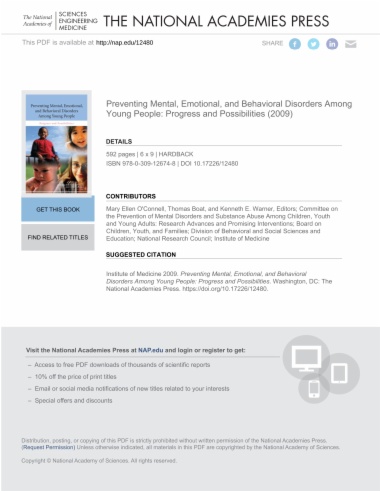

Mental health and substance use disorders among children, youth, and young adults are major threats to the health and well-being of younger populations which often carryover into adulthood. The costs of treatment for mental health and addictive disorders, which create an enormous burden on the affected individuals, their families, and society, have stimulated increasing interest in prevention practices that can impede the onset or reduce the severity of the disorders.
Prevention practices have emerged in a variety of settings, including programs for selected at-risk populations (such as children and youth in the child welfare system), school-based interventions, interventions in primary care settings, and community services designed to address a broad array of mental health needs and populations.
Preventing Mental, Emotional, and Behavioral Disorders Among Young People updates a 1994 Institute of Medicine book, Reducing Risks for Mental Disorders, focusing special attention on the research base and program experience with younger populations that have emerged since that time.
Researchers, such as those involved in prevention science, mental health, education, substance abuse, juvenile justice, health, child and youth development, as well as policy makers involved in state and local mental health, substance abuse, welfare, education, and justice will depend on this updated information on the status of research and suggested directions for the field of mental health and prevention of disorders.